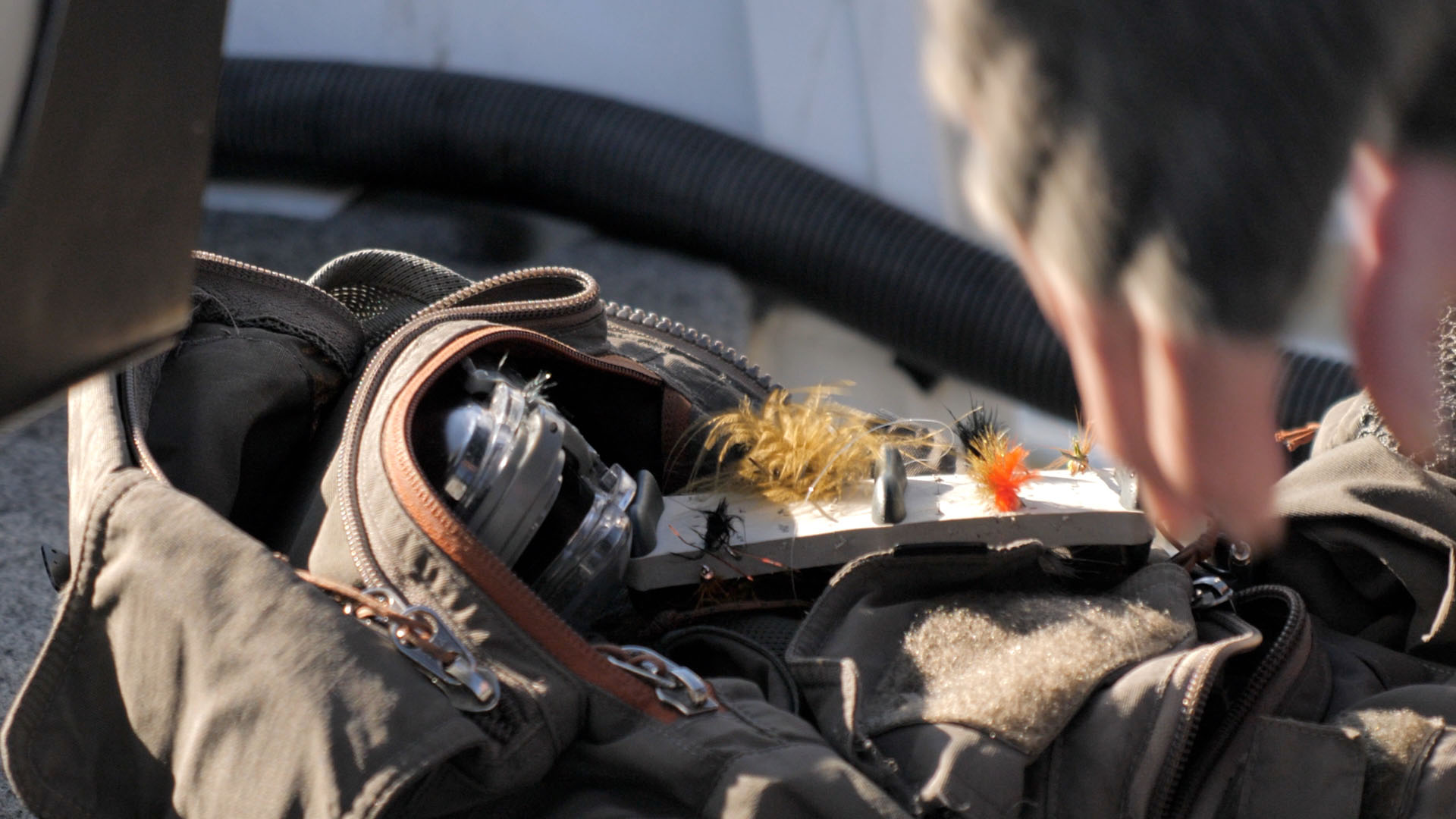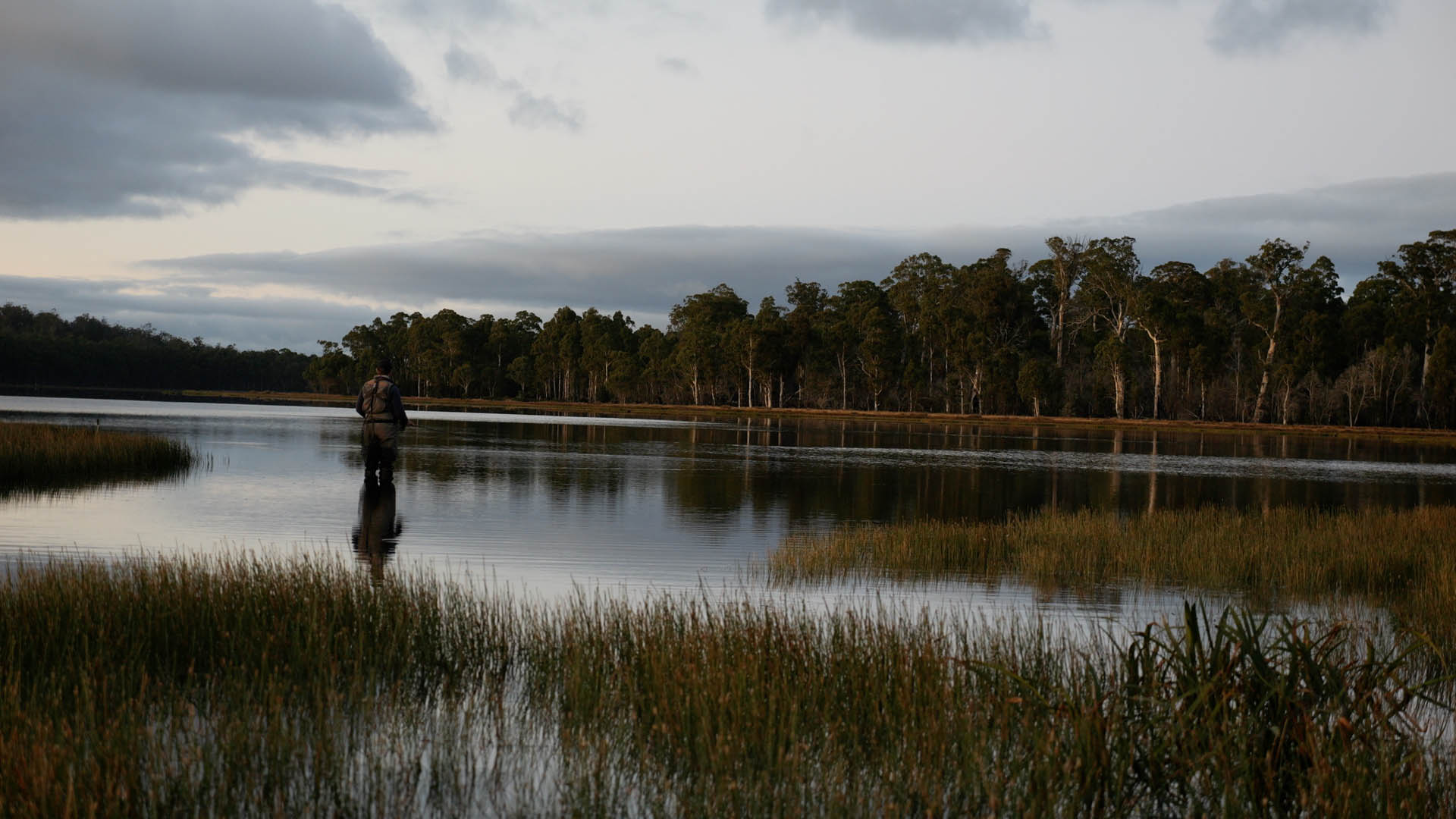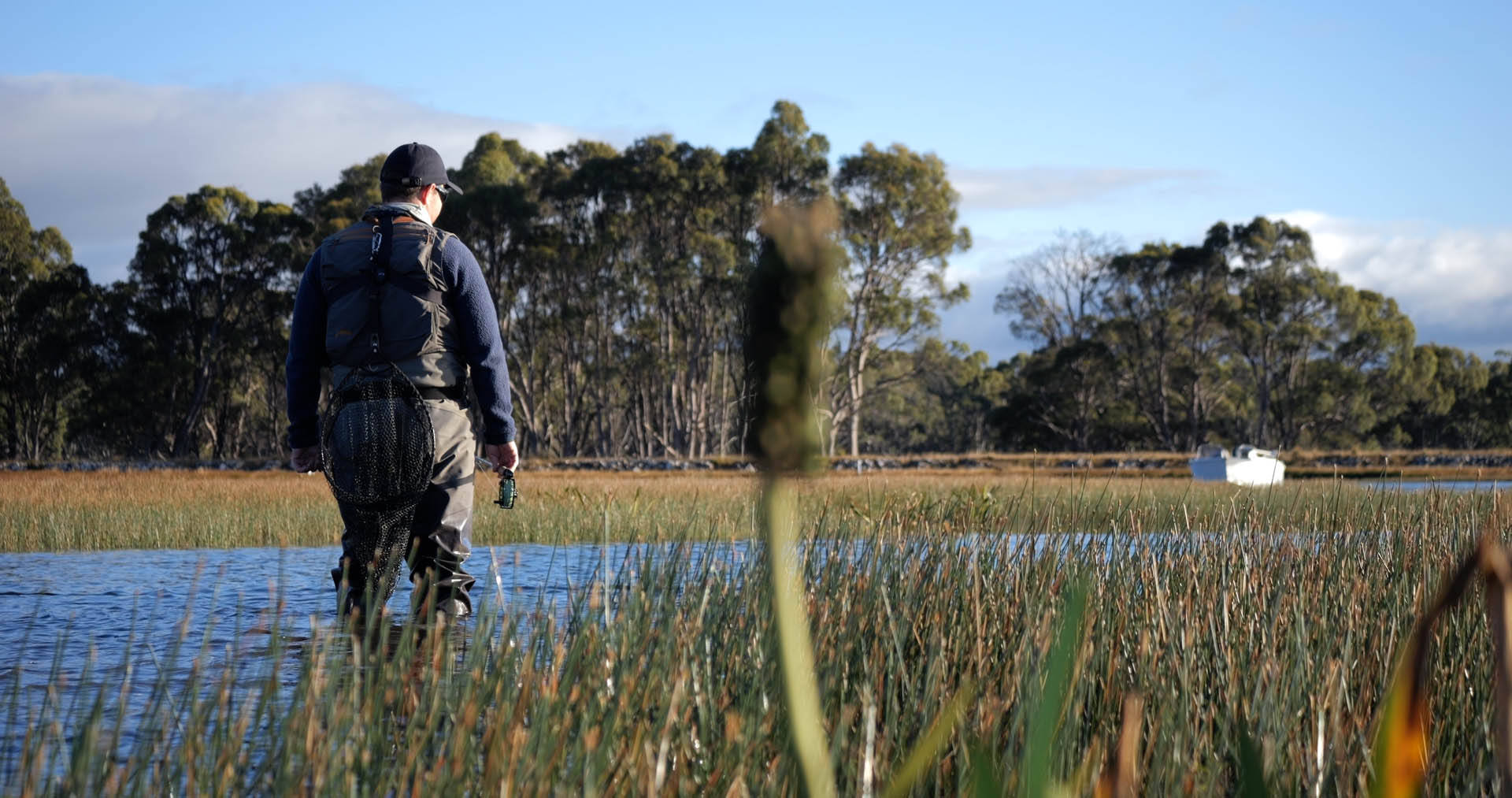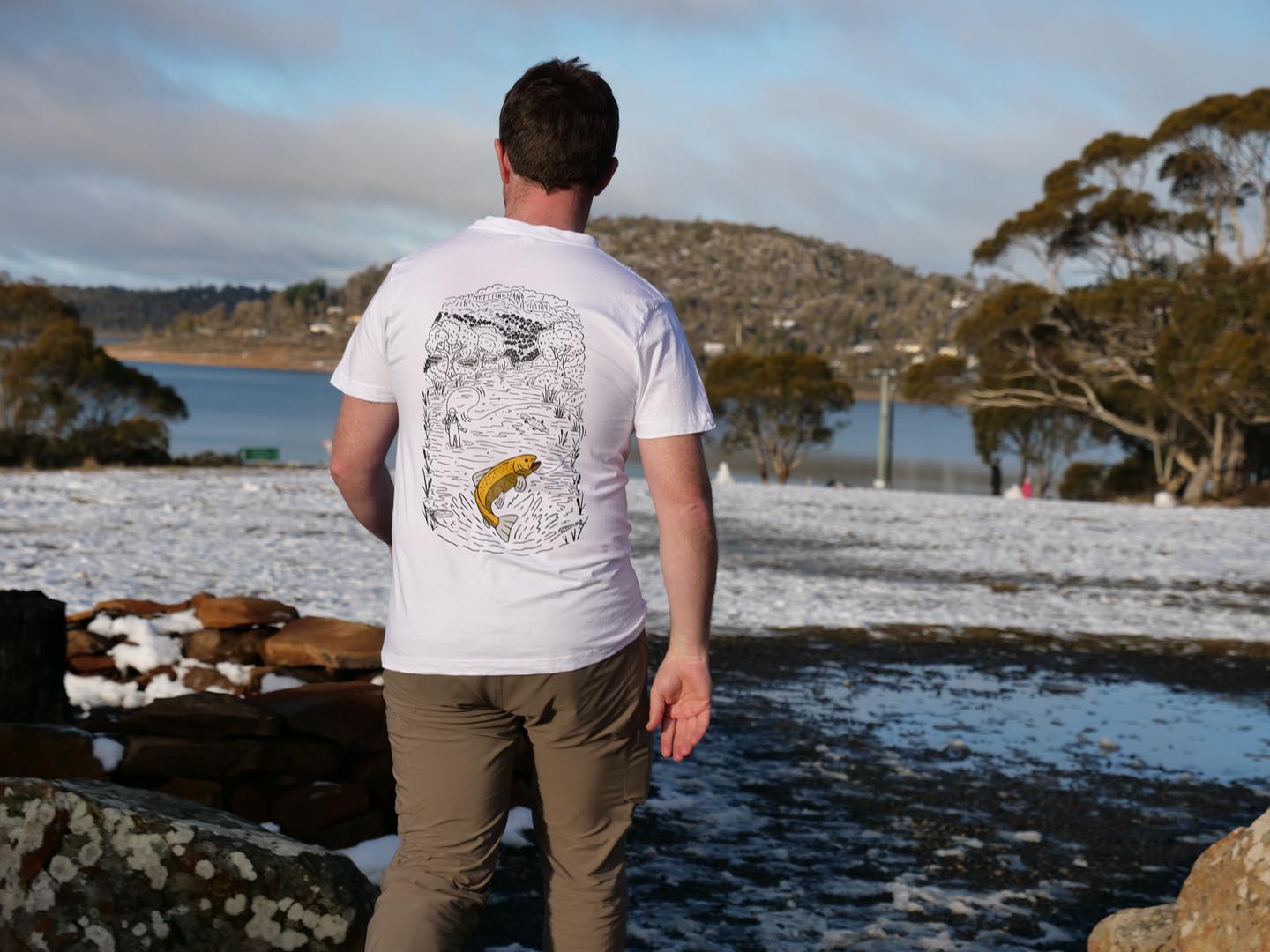Discover the top flies for early season fly fishing in Tasmania 2025/26, handpicked by Trout Tales for proven success on local lakes and rivers.
The start of the Tasmanian trout fishing season is one of the most exciting times of the year.
Fish are hungry after the long winter, water levels are refreshed from seasonal rains and snowmelt, and the first trips back to the lakes and rivers are full of anticipation.
But with unpredictable conditions and trout feeding patterns still in transition, choosing the right flies becomes even more important.
Having spent ample time on the water now, both with clients and fishing ourselves, our Winter Flies Combo has been handpicked to give you the best chance of success in these early parts of the season.
In particular, our choices feature three proven patterns that consistently produce fish when it counts and still give enough versatility to pivot to varying conditions.
Early Season Fly Fishing Conditions
Unsurprisingly, early season fishing in Tasmania is all about adjusting to cooler water temperatures, variable weather, and trout that are feeding opportunistically after winter.
Fish can often be found patrolling the shallows, looking for worms, baitfish, and aquatic insects that have been dislodged or flushed into the system.
At other times, fish may hold slightly deeper, requiring a change in line weight or in particular retrieve style.
The retrieve technique is something that we’ve spoken about at length in our loch style fly fishing masterclass video, including the basics but also opportunities to mix up the style to match water conditions and insect life.
Overall, early season is a time of year where being flexible with your approach pays off, some days call for searching patterns with plenty of flash, while others reward more subtle, natural imitations.
For a closer look at how this Tasmanian fly fishing season has started, check out our full Opening Weekend Recap and 2025 Trout Fishing Season Preview, it’s packed with on-water insights and first-hand observations from the lakes.

The Importance of Fly Choice
Your fly choice early can make a big difference between a slow day and a successful one when on Tasmania's waters.
It can be easy to overlook that trout respond best to patterns that match their current food sources, which early on often means imitations of baitfish, small nymphs, or even mudeyes as the season progresses.
Water clarity plays a role too, slightly coloured water from winter runoff can make a touch of flash more effective, helping trout detect your fly from further away.
On calm, sunny days, more subtle patterns can tempt fish that might shy away from something too bold.
As water temperatures rise and insect life becomes more active, trout behaviour changes - you can read more about these seasonal shifts in our Tasmania Trout Fishing Seasonal Behaviour guide.
Our Top Three Fly Picks for Early Season
These patterns are part of our Winter Flies Combo (which also comes with a free Trout Tales Stubby Holder) and have been chosen specifically for early season conditions in Tasmania.
They give you versatility across changing weather, water clarity, and trout feeding behaviour.
.jpg)
MKII Woolly Bugger
A refined take on the classic Woolly Bugger, the MKII version blends a natural profile with just enough flash to be versatile in all early season situations.
The marabou tail gives it irresistible movement, and the subtle body ribbing adds texture without being too bold. Fish it slow and deep when trout are sulking, or strip it faster to tempt cruising fish in shallows.
“It’s one of those flies you can fish anywhere, any time - and it still produces,” Matt notes.
We’ve had it account for multiple hook-ups in both calm and choppy conditions, especially when worked methodically along weed edges.
Orange Beaded Black and Red Streamer
This pattern’s combination of black and red body with an eye-catching orange bead makes it deadly in early season. The bead adds subtle flash and helps the fly get down to where the fish are holding, while the red and black tones imitate a range of aquatic prey.
A touch of flash in the tail helps draw attention without overwhelming the natural profile, making it versatile for both bright and overcast conditions.
Matt shares “That orange bead catches light and adds just enough weight to keep you in the strike zone.”
This fly was a standout in our opening weekend recap, tempting several Penstock browns when the wind eased and the trout became more selective.
Chartreuse Beaded Straggle Bugger
Bright and flashy, the Chartreuse Beaded Straggle Bugger is an excellent searching pattern for early season, especially when water clarity is low from winter runoff.
The vibrant chartreuse body and bead stand out in murky water, while the straggle hackle creates a lifelike, breathing movement. Ideal for covering water quickly, it can trigger reaction bites from aggressive fish.
“When I want to wake them up and get a response, this is the one I tie on,” says Matt
We’ve seen it shine on breezy days when fish are cruising the edges, with the bright profile standing out in wind-rippled water.
Bonus Pick: Any Streamer with Subtle Flash
On bright days when the fish still need a reason to commit, a streamer with just a touch of flash can be the perfect middle ground.
Enough shimmer to catch their attention, but not so much that it spooks them in clear, sunny conditions. These patterns excel when fished slowly along weed edges or in shallow bays
“Sometimes all you need is that tiny glint to seal the deal,” Matt explains.
We’ve seen this approach turn following fish into committed takes on sunny, still afternoons.

Frequently Asked Questions About OurWinter Flies Combo
When is the best time to use the Winter Flies Combo?
It’s perfect for early season conditions, typically from August to October, but all three patterns can be effective throughout the year with the right approach.
Do I need to change flies often early in the season?
Yes. Varying light, wind, and water conditions can all influence what trout respond to, so switching patterns can make a big difference.
Can these flies be used in both lakes and rivers?
Absolutely. While they shine in stillwater, they’re equally at home in river systems - just adapt your presentation and retrieve speed.
Do I need special gear for these flies?
A standard 6-weight rod paired with floating or intermediate lines is a great starting point, with sinking lines useful for deeper work.
Where can I buy the Winter Flies Combo?
You can order it online through our Trout Tales Shop, with each fly tied to the same high standard we use on our guided trips.
Get Your Flies
Whether you’re heading out for the first trip of the season or planning a return to your favourite waters, having the right flies in your box can make all the difference.
These early season patterns have already proven themselves on the water this year and are ready to help you make the most of Tasmania’s prime trout fishing months ahead.
You can grab all of these patterns and more early season favourites in our Winter Flies Combo, tied to the same standard we use on our guided trips. Stock up, get out there, and let’s make this season one to remember.
Feature Posts
Ready to book A trip?
Experience all of what fishing in Tasmania has to offer through a personalised fly fishing tour.
Book Now





